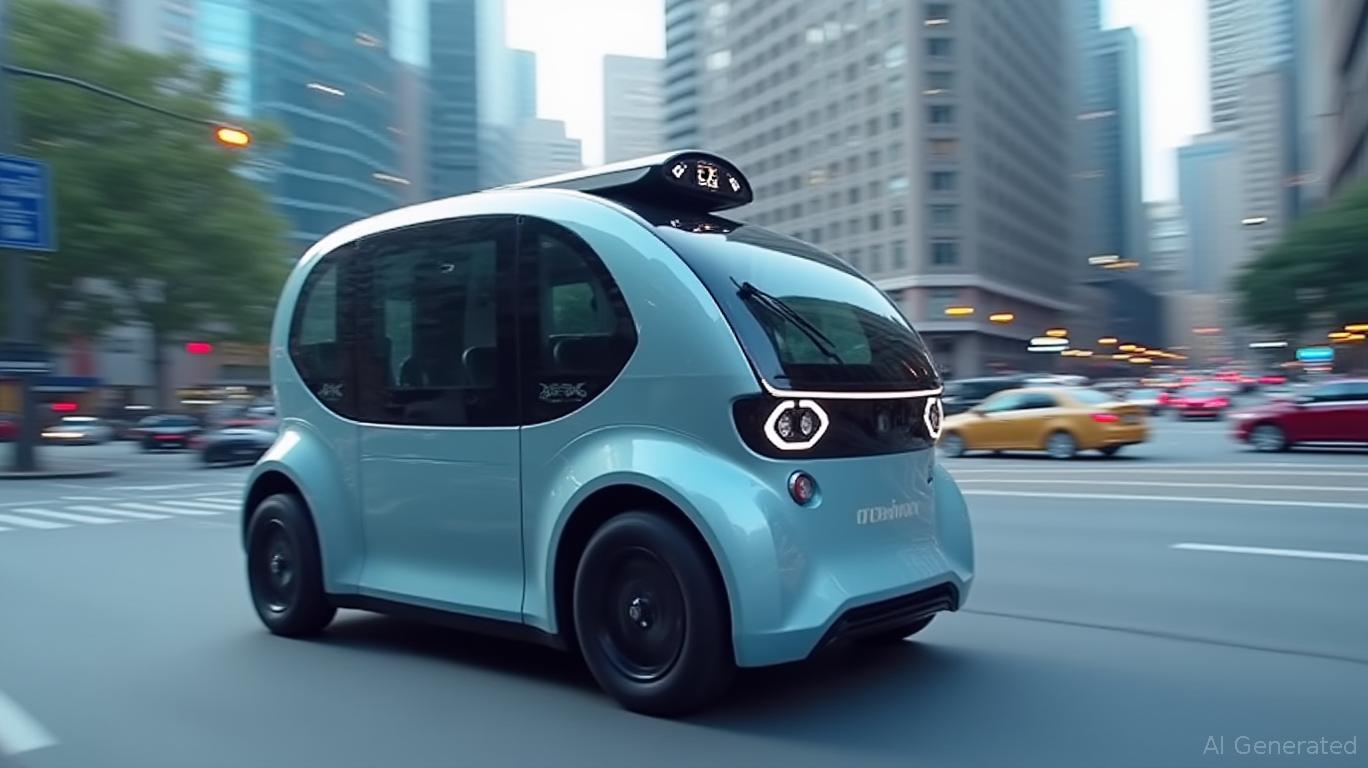Pony.ai's Gen-7 Robotaxis: A Cost-Effective Play in the Autonomous Mobility Gold Rush
The autonomous mobility sector is at an inflection point, and Pony.ai is positioning itself as a leader with its Gen-7 Robotaxi system—a breakthrough that combines cost leadership with strategic partnerships to drive commercial scalability. As the market races toward profitability, Pony.ai's 70% reduction in bill-of-materials (BOM) costs, automotive-grade technology, and ecosystem alliances are creating a blueprint for dominance in the $215 billion autonomous vehicle market.
The Cost Revolution: How Gen-7 Lowers Barriers to Scale
Pony.ai's Gen-7 system slashes
costs by 70% compared to prior generations, a milestone achieved through a shift to 100% automotive-grade components. This move not only enhances safety and reliability but also aligns the technology with automotive manufacturing standards, enabling mass production. Critical to this reduction are cost cuts of 80% in autonomous driving computation (ADC) and 68% in solid-state LiDAR, which are foundational to the system's perception and decision-making capabilities.The Gen-7's platform-based architecture further accelerates scalability. Designed to work across multiple vehicle models—such as the Toyota bZ4X and GAC Aion V—the system reduces integration costs and allows Pony.ai to deploy its technology broadly without reinventing the wheel for each partner. Equipped with six mass-production sensors and a proprietary cleaning solution for adverse weather, the Gen-7 delivers 360-degree, blind-spot-free perception, a critical feature for urban environments.

Ecosystem Partnerships: Building a Global Mobility Network
Pony.ai's strategy isn't just about hardware—it's about weaving together an ecosystem of partners to dominate the autonomous mobility stack. Key alliances include:
- Automotive Giants: Partnerships with Toyota, BAIC, and GAC ensure access to manufacturing expertise and global supply chains.
- Tech Powerhouses: Tencent Cloud, Alipay, and Amap provide data infrastructure, payment solutions, and mapping tools.
- Ride-Hailing Giants: Uber and ComfortDelGro offer distribution channels to scale quickly.
- Local Operators: In Shenzhen, the partnership with Xihu Group—a top taxi operator—will deploy over 1,000 Gen-7 Robotaxis, leveraging Xihu's fleet management and regulatory know-how.
These partnerships create a virtuous cycle: Pony.ai focuses on R&D and AI, while partners handle manufacturing, distribution, and compliance. The “asset-light + AI-empowered” model reduces capital risks and accelerates time-to-market, a critical edge in a capital-intensive industry.
Financials Signal a Path to Profitability
Pony.ai's Q1 2025 results highlight both challenges and opportunities. While the company reported a $37.4 million net loss, this reflects aggressive R&D spending ($47.5 million, up 59.8% YoY) and one-time costs. However, revenue grew 12% YoY to $14 million, driven by an 800% surge in fare-charging revenue, proving demand for autonomous services. With $738.5 million in cash reserves, Pony.ai aims to reach unit economic breakeven by 2026, a target underpinned by Gen-7's cost efficiency and fleet expansion.
Why Pony.ai is a Must-Hold Stock
The autonomous mobility sector is a gold rush, but Pony.ai's combination of cost leadership and ecosystem strength positions it to monetize first. By 2026, the company expects to deploy 1,000+ Gen-7 Robotaxis, a fleet size that could generate meaningful recurring revenue. Meanwhile, its 45 million kilometers of test data and 500,000 hours of driverless operation provide a safety record that competitors struggle to match.
The Xihu partnership in Shenzhen—a city with 2,000 sq km of driverless zones (20x larger than San Francisco's)—is a geopolitical advantage. As China pushes for autonomous transport adoption, Pony.ai's local ties and regulatory approvals create a moat against global rivals like Waymo and Cruise.
Risks on the Horizon
- Regulatory Delays: Even in Shenzhen, public acceptance and policy changes could slow deployments.
- Technical Competition: Startups and automakers are investing heavily in LiDAR and AI, raising the bar for innovation.
- Execution Risks: Scaling from 1,000 to 10,000+ vehicles requires flawless integration with partners.
Conclusion: A Buy on the Cusp of Profitability
Pony.ai's Gen-7 system and strategic partnerships are not just incremental improvements—they're a blueprint for turning autonomous mobility from a costly experiment into a profitable service. With cost reductions paving the way for breakeven and partnerships unlocking global scale, 2025 is Pony.ai's year to prove the economics of autonomous mobility. The backtest of a strategy that buys PONY on quarterly earnings announcement dates and holds for 30 days from 2020 to 2025 underscores this thesis: it delivered a 278.22% compound annual growth rate (CAGR), a 29.58% annualized return, and a favorable Sharpe ratio of 1.22, despite a maximum drawdown of -64.81% and volatility of 228.09%. While risk management remains critical, this strategy's historical performance aligns with Pony.ai's trajectory toward profitability. For investors, this is a buy at current valuations, with a multi-year horizon to capture the sector's upside. As the autonomous gold rush accelerates, Pony.ai is digging in the right place.

Comments
No comments yet